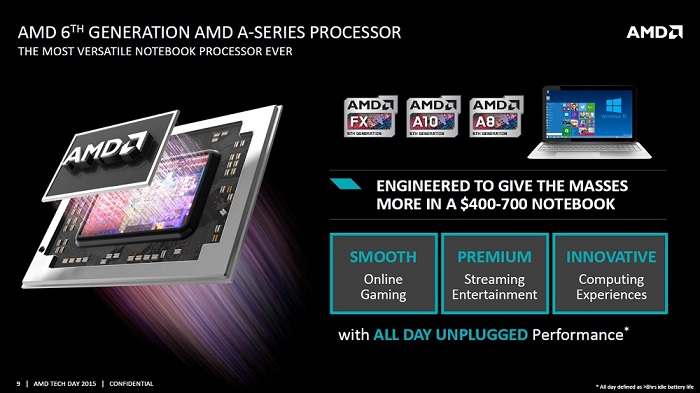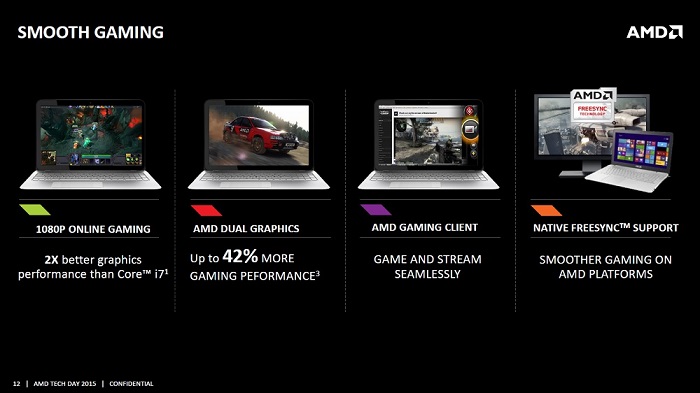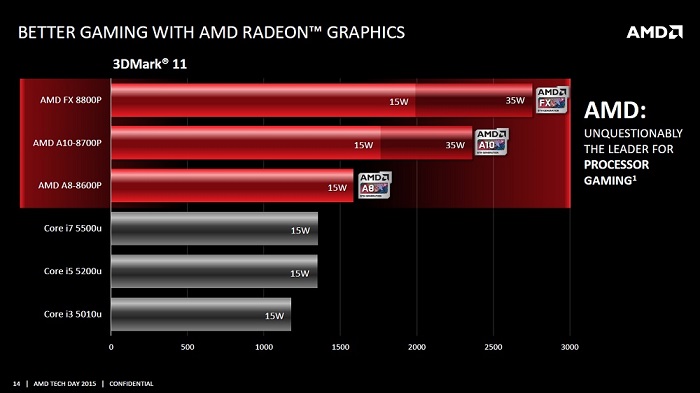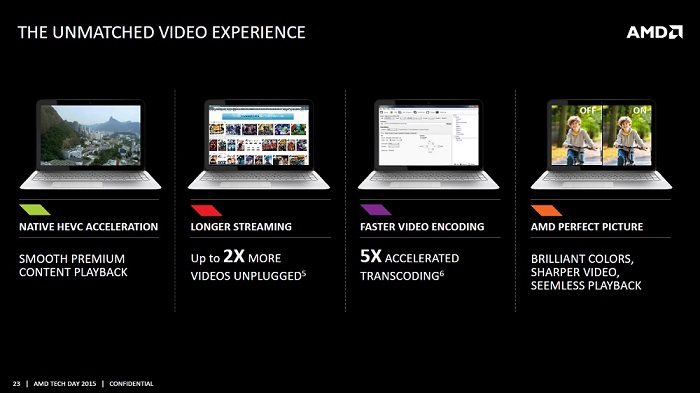A recipe for success?
AMD's Carrizo APU was developed with a tri-pillar strategy in mind which covers gaming, entertainment streaming and a term that AMD calls "computing experiences". The reason for focusing on these elements is because AMD believes these are important to the consumer usage model of the targeted mainstream market.
Gaming
Bringing the gaming element under the microscope first AMD is pitching its Carrizo APUs as capable gaming hardware whether in 15W or 35W modes. Carrizo comes equipped with Radeon R6 and R7 branded graphics processing units making them all capable of a notebook-class gaming experience. Carrizo is by no means a desktop replacement but it is still capable of tackling the most popular online PC games like Counter Strike: Global Offensive, DOTA 2 and League of Legends with playable frame rates at maximum settings and 1080p resolution.
The Carrizo 6th Generation APUs also come with support for FreeSync technology though implementation of such a feature is likely to arrive with notebooks at the top-end of the Carrizo stack rather than with entry-level models. Compared with the 5th generation flagship APU, the FX-7600P, the new flagship FX-8800P is capable of nearly twice as much gaming time on battery. AMD claims the FX-8800P can typically push 2 hours or more of DOTA 2 in full HD.
Entertainment Streaming
The growing popularity of streaming services like Amazon Prime, Hulu Plus and Netflix means that delivering a high quality streaming experience to consumers is important. Carrizo directly targets better streaming in a few ways but primarily it's the implementation of a High Efficiency Video Coding (HEVC) engine that enables this. The HEVC H.265 engine allows Carrizo APUs to easily tackle up to UHD 4K video playback in a stutter-free way thanks to the lower bandwidth requirements of HEVC. Most notebooks in the $400-700 segment will have up to 1080p resolutions meaning the ability to deal with 4K content isn't necessarily that useful, though the option for UHD to HD downsampling is nice to have.
AMD has also reworked the prevalent H.264 engine with Carrizo, dedicating additional silicon area to the video coding engine (VCE). AMD claims the die area set aside for the VCE has increased 300 per cent allowing for faster transcoding and more efficient decoding due to the presence of more dedicated video hardware. Another benefit of using dedicated video coding hardware is that a smaller amount of the workload is offloaded to the CPU or GPU resulting in less power consumption, AMD pledges a 2X improvement in battery life when dealing with H.264 content.
Computing Experiences
The computing experiences pillar is vaguer than the others but includes some interesting elements nonetheless. Of most interest is the increased battery life offered by Carrizo - a direct result of the increased efficiency of the hardware design that will we discuss further in the technology deep dive. Full compatibility with Windows 10 and DirectX 12 is more of a given, rather than a feature, but AMD did demonstrate a neat application that takes advantage of the HSA 1.0 specification.
AMD Looking Glass is a custom software program from AMD that allows Carrizo APUs to search and index video content using facial recognition. By scanning multiple videos it's possible to find all videos in which a specific person is present, or not present. A novel talking point it may be but AMD did not divulge as to whether consumers would be able to access the software, at present AMD Looking Glass is a prototype.














